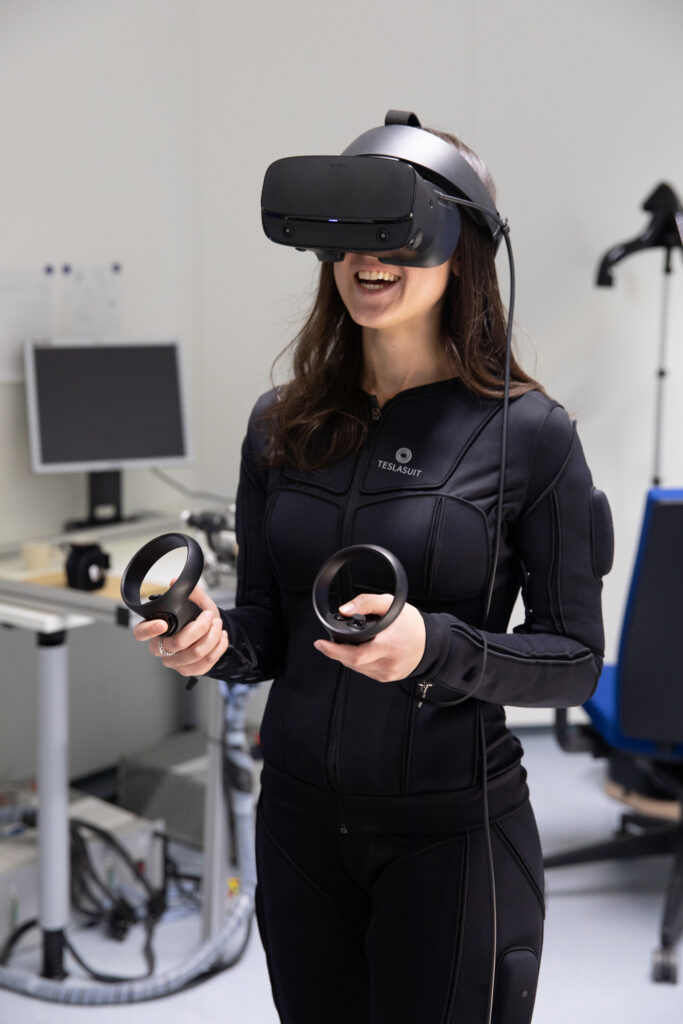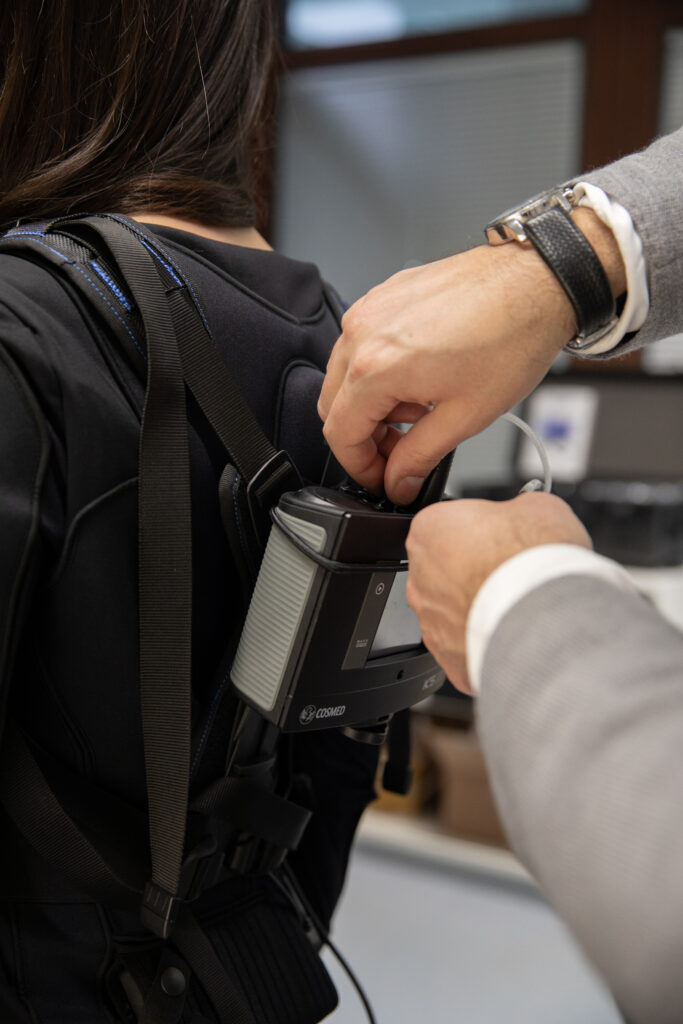The very name of the ARIES Lab of the Heidelberg University, Germany, gives a picture of what it’s about: Assistive Robotics and Interactive Exosuits. The lab’s team works on a so-called “exosuit” that assists people in their movements by artificially affecting joints while saving the experience lifelike — which, naturally, requires a sophisticated biomechanical system. To create one and explore if the neuromuscular electrical stimulation (NEMS) technology can help precisely reproduce joint torque and such accompanying physiological reactions as fatigue and metabolic effort, the scientists conduct research using the TESLASUIT. And their first choice fell on the elbow.
From the article below, you will learn about the essence of “the elbow experiment” and the main conclusions made during it. And the full version of the study, “Rendering Immersive Haptic Force Feedback via Neuromuscular Electrical Stimulation,” is available here.
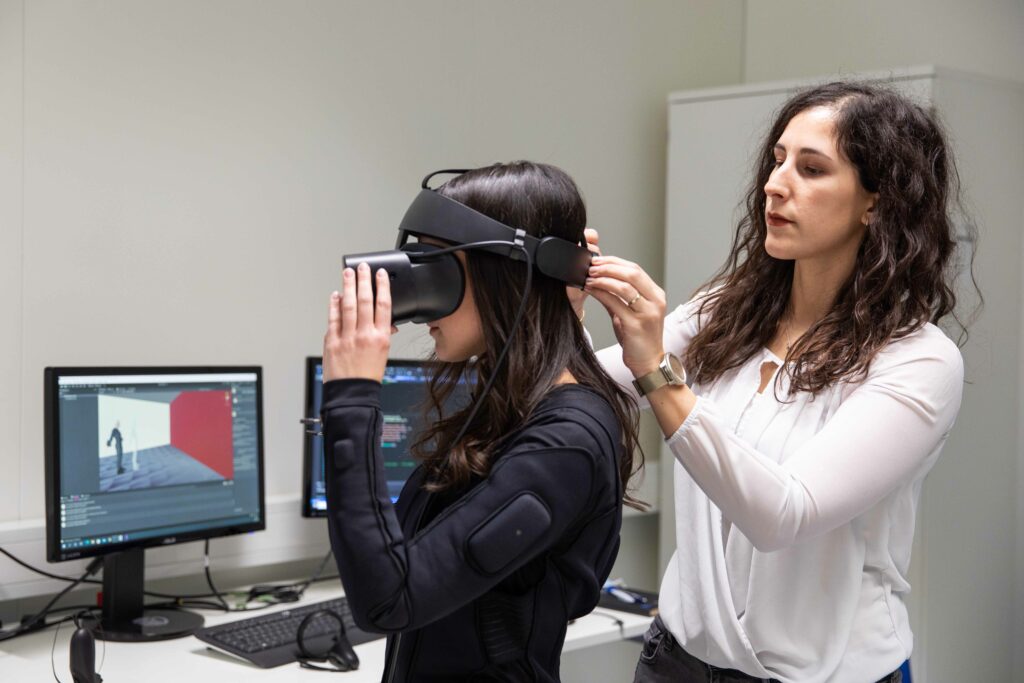
Virtual and augmented realities obtain a colossal yet limited potential as, as a rule, you can’t literally feel them, so your experience is not 100% immersive. “Classic” robotic suits, being fairly advanced these days, is something you can feel and touch, but they are too bulky and clumsy for modeling and executing delicate operations, have poor bandwidth and limited workspace. To reach their goals, the ARIES Lab needed a solution to deal with all these shortcomings, and here came the lightweight, flexible, and so tactile TESLASUIT with the NEMS technology onboard.
Essence and methodology
To see how effective in stimulating joints and providing haptic illusion when interacting with virtual objects NEMS can be, the ARIES Lab:
- developed a NEMS-driven subject-specific haptic interface for estimating elbow torque during objects’ holding and lifting to deliver expected electrical muscle stimulations in real time;
- evaluated the interface in a fully immersive virtual environment via monitoring physiological and kinematic metrics;
- simulated, by stimulating the biceps and triceps, the effort of a virtual load on the arm and compared it with real-load and no-load conditions in terms of kinematic response, metabolism, and perception of fatigue.
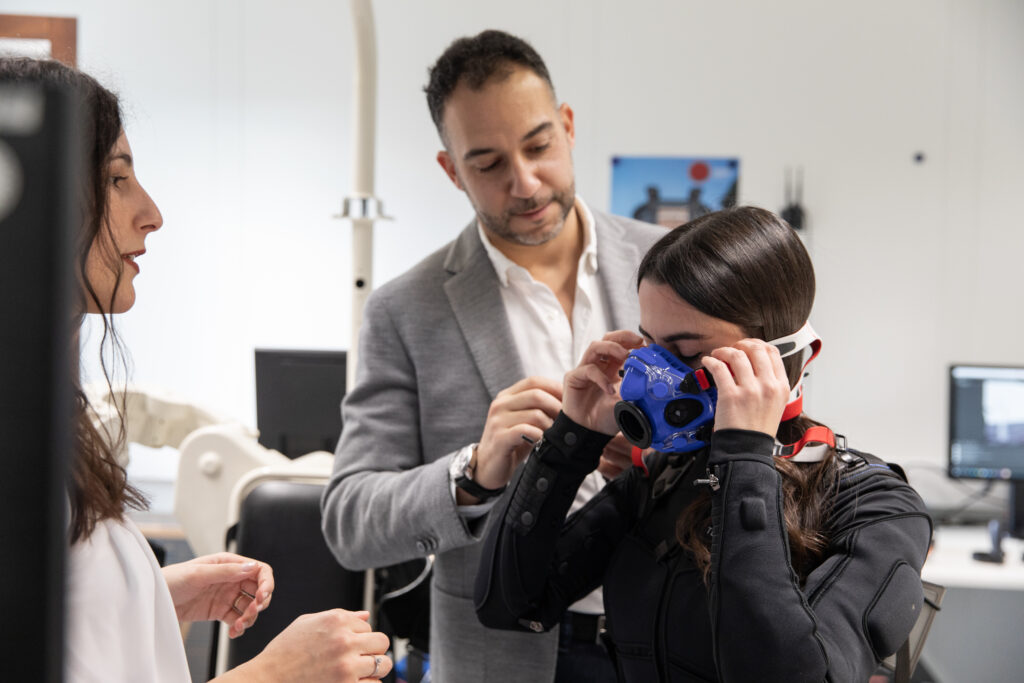
The researchers used their dedicated virtual reality environment, built on the Unity engine, the TESLASUIT, Oculus Rift S 3D visor, and COSMED K5 metabolic consumption device.
There were twelve participants in the experiment — ten females and two males aged 27.4 ± 3.8, all healthy, right-handed, and of a regular height (165.2 ± 6.2 cm) and weight (62.25 ± 7.9 kg). None had recorded neurological diseases, and all subjects demonstrated a normal joint range of motion and muscle strength.
The volunteers went through three scenarios in virtual reality, with a digital “phantom” to repeat movements and poses after. For a start, they had to lift and hold a real object, a small cube of 0.5 kg weight. In the second part, the participants interacted with the cube’s analog in virtual reality, receiving haptic feedback from the TESLASUIT. And in the last one, they received visual feedback from the virtual scenario alone, e.g., with no load on the arm. Each condition lasted 4 minutes, and to exclude any distortions that fatigue might cause, the subjects rested between the scenarios.
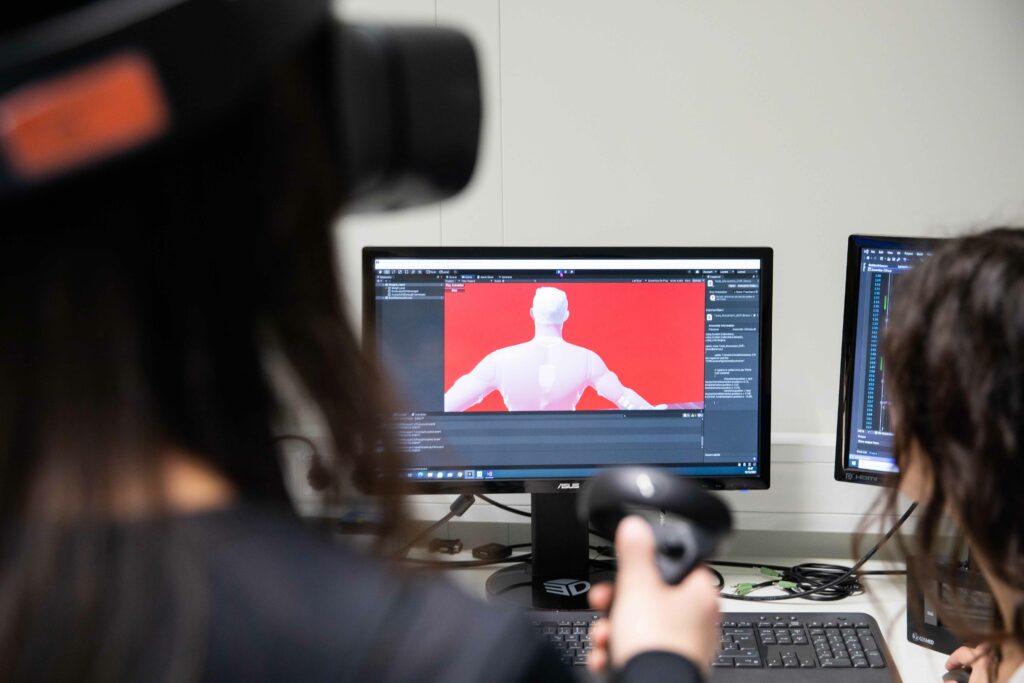
To arrange the experiment, the researchers first specified the biceps and triceps reactions on different NMES stimulations in terms of the resulting measured forces and parametrized the cube (dimensions, weight, density) for replicating it in the virtual space. The setup, including NMES feedback, was tuned not individually for each subject but for the whole group, keeping the same effects. That, the researchers admit, was possible thanks to a prior isometric calibration and the suit’s design that, against traditional electrode systems, doesn’t require maximum accurate positioning on the body.
The lab’s NMES real-time haptic feedback model-based controller delivered, via the TESLASUIT, expected power to the biceps and triceps depending on the movement phase, either extension or flexion, thus inducing the elbow torque and local sensation of holding and lifting the cube.
For mathematical justification and respective formulas and graphs, please proceed to the full version of the study.
Observations and conclusions
Spoiler: the main conclusion from the recorded results is that NEMS, and the TESLASUIT in particular, works. The measurements testify that NMES-based haptic feedback can reliably imitate lifting and holding — and interacting in general — actual objects, enriching VR/AR experience and thus opening new horizons in numerous fields. The ARIES lab’s research complies with recent studies that suggest NMES as a suitable technology for delivering haptic feedback in virtual scenarios.
Judging by the movement accuracy kinematic measurements recorded during the experiment, NEMS stimulation doesn’t affect the final kinematics, with movements rendered as accurate as in the real-load and no-load scenarios. At the same time, haptic feedback that the TESLASUIT generates via NEMS can reproduce the analogous torque for the elbow joint as an actual weight would.
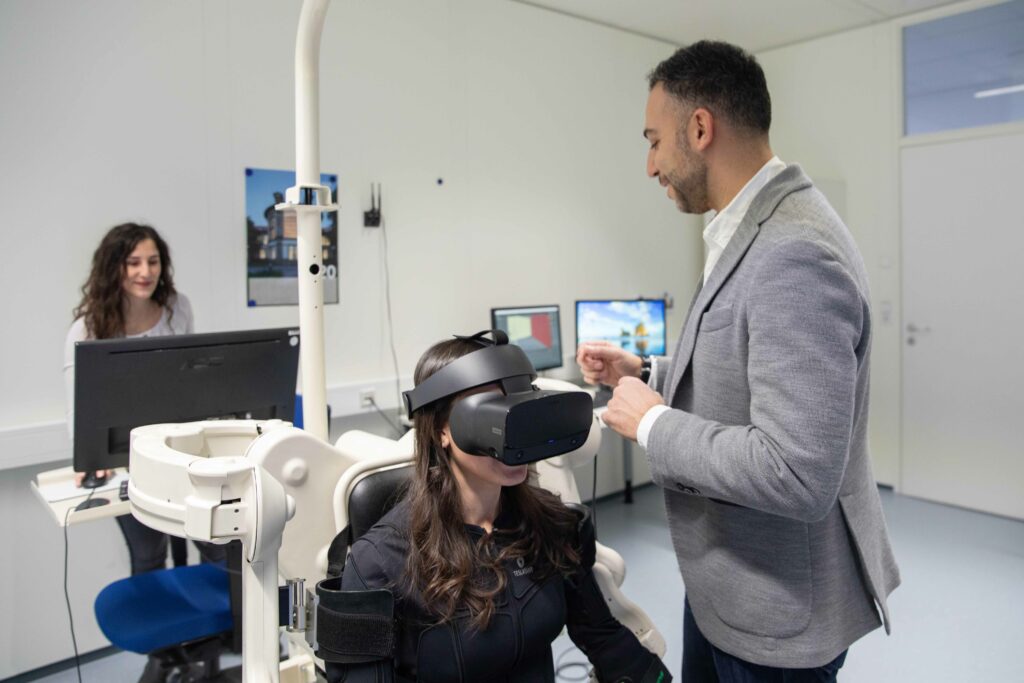
The study became the first of its kind to record the quantitative fatigue consumption during NMES stimulations with respect to analogous physical load. The measured consumption outcome showed that, in terms of metabolic effort, haptic feedback delivered by the TESLASUIT is comparable to the real-load condition, differing significantly from the arm’s performance with no load. The same goes for the sensation of muscle activation.
Also, according to the lab’s statistical analysis, NEMS delivers almost the same feeling of naturalness as if the user interacted with a real, not a virtual object — at a much higher level than in the no-load case.
Let’s summarize. As the ARIES Lab’s study proved, the TESLASUIT, and the NEMS technology in general, is able to effectively and realistically reproduce the elbow — and, obviously, not only — joint torque by muscle electrical stimulation. It allows for faithfully simulating weightlifting and other interactions with an object in virtual reality with similar sensations and physiological effects as if that object was real. The researchers believe such NEMS-powered solutions as the TESLASUIT can dramatically expand the opportunities in numerous fields: education, training professionals (i.e., for risky occupations like first-aid responders, firefighters, soldiers, etc.), sports, gaming, rehabilitation, and various remote operations, up to telesurgery.
Want to join our dedicated Academic program and conduct your own research using the TESLASUIT? Message us!
Photos by the ARIES Lab of the Heidelberg University.

